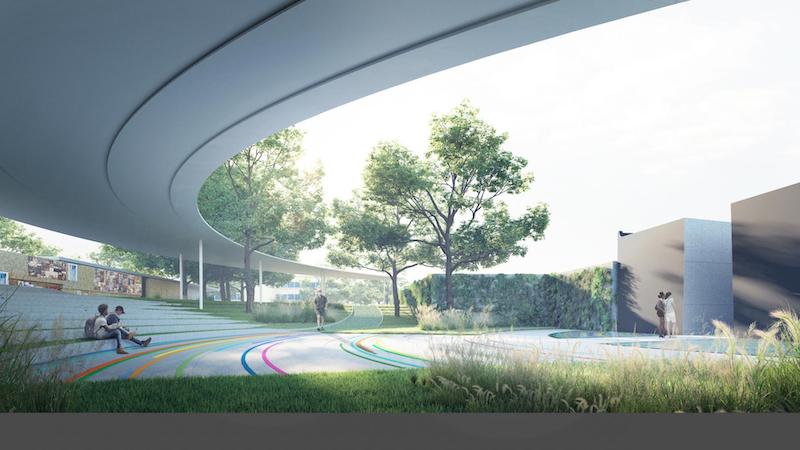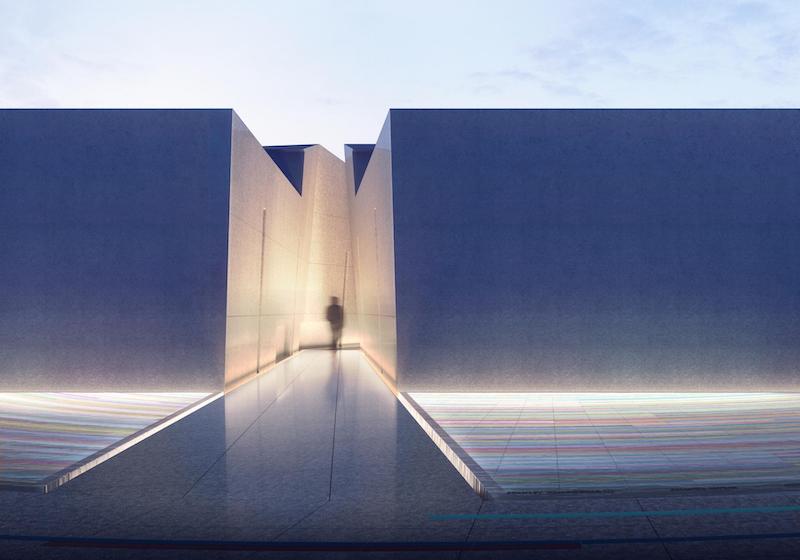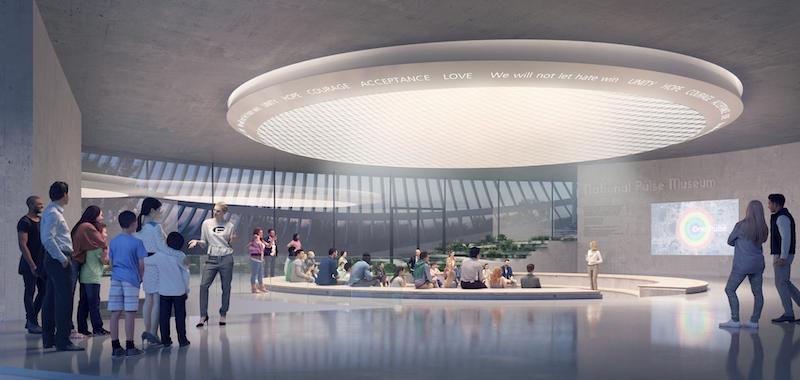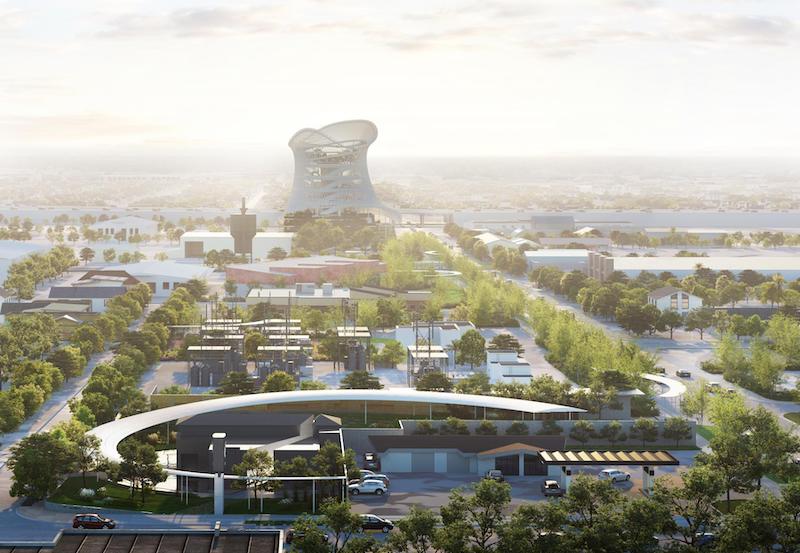After a seven month design competition that comprised 68 entries and six shortlisted designs, the onePULSE Foundation (a nonprofit established by the owner of the Pulse nightclub after the mass shooting that took place) has selected Coldefy & Associés’ design for a permanent memorial and museum.
The multi-level, open-air structure features a shallow reflecting pool that surrounds the original Pulse nightclub building. A palette of 49 colors, for the 49 victims of the shooting, lines the reflecting pool basin and radiates towards the public spaces and the reflecting pool leads to an outdoor garden planted with 49 trees. An adjacent space is dedicated to gathering and celebration.

The renewed West Kaley street provides a shaded connection to the new museum, which rises “like a budding flower” and signals the entrance to the Pulse district. Vertical gardens and public plazas create new community spaces and a rooftop promenade offers views of the memorial and the entire surrounding district.
See Also: A watchtower in Harlem, once a firefighter’s lookout, is restored as a landmark

A Survivors Walk on Orange Avenue leads from the memorial towards downtown and features interactive sculptures commemorating all those affected by the tragedy. In the future, promenades, bike paths, and a Pulse shuttle will connect to the train station and create walkable loops that will help spark the future growth of the neighborhood.
The entire project team consists of Coldefy & Associés with RDAI, HHCP Architects, Xavier Veilhan, dUCKS scéno, Agence TER, and Prof. Laila Farah.



Related Stories
| Aug 11, 2010
Bronze Award: Alumni Gymnasium Renovation, Dartmouth College Hanover, N.H.
At a time when institutions of higher learning are spending tens of millions of dollars erecting massive, cutting-edge recreation and fitness centers, Dartmouth College in Hanover, N.H., decided to take a more modest, historical approach. Instead of building an ultra-grand new facility, the university chose to breathe new life into its landmark Alumni Gymnasium by transforming the outdated 99-y...
| Aug 11, 2010
Fleet Library, Rhode Island School of Design
When tasked with transforming an early 1920s Italian Renaissance bank building into a fully functional library for the Rhode Island School of Design, the Building Team for RISD's Fleet Library found itself at odds with the project's two main goals. On the one hand, the team would have to carefully restore and preserve the historic charm and ornate architectural details of the landmark space, d...
| Aug 11, 2010
Gold Award: The Lion House, Bronx Zoo Bronx, N.Y.
Astor Court sits at the heart of the 265-acre Bronx Zoo, and its six Beaux Arts buildings were constructed at the turn of the 20th century to house exotic animals from around the world. When the Lion House was built in 1903, the brick and limestone facility was considered state-of-the-art, but as standards of animal care advanced, the lions were moved into a more natural setting, and the Lion H...
| Aug 11, 2010
The pride of Pasadena
As a shining symbol of civic pride in Los Angeles County, Pasadena City Hall stood as the stately centerpiece of Pasadena's Civic Center since 1927. To the casual observer, the rectangular edifice, designed by San Francisco Classicists John Bakewell, Jr., and Arthur Brown, Jr., appeared to be aging gracefully.
| Aug 11, 2010
Platinum Award: Reviving Oakland's Uptown Showstopper
The story of the Fox Oakland Theater is like that of so many movie palaces of the early 20th century. Built in 1928 based on a Middle Eastern-influenced design by architect Charles Peter Weeks and engineer William Peyton Day, the 3,400-seat cinema flourished until the mid-1960s, when the trend toward smaller multiplex theaters took its toll on the Fox Oakland.







